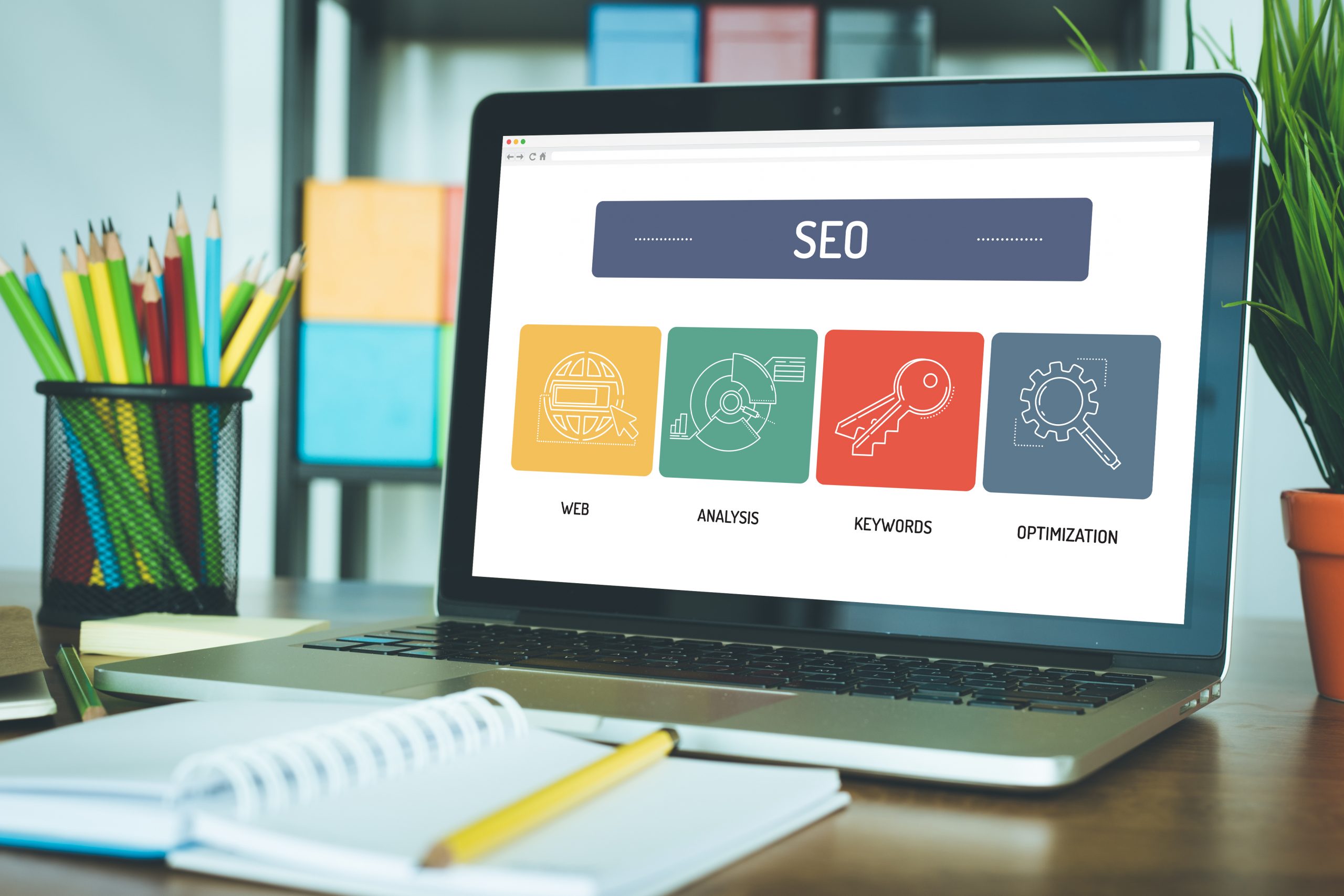React has built over 9 million websites, including Facebook, Instagram, Netflix, Airbnb, and other well-known websites. While there are issues regarding React’s interoperability with SEO tactics, if you google “watch series online” or “book apartments,” Netflix and Airbnb will show at the top of the search results.
SEO mastery means more traffic, prospects, and profitability for your company. Aside from that, SEO may help you build connections, raise brand awareness, and position yourself as a trustworthy and reliable authority in your sector. So, what’s the trick? What is the challenge of mixing JavaScript and SEO, and how can you create SEO-friendly React applications?

What is the significance of SEO, and how does a search engine work?
SEO is vital because it maintains the fairness of search engine results such as Google, Bing, and Yahoo. It removes or minimises the likelihood of tampering with search results. It would be relatively simple to modify search results without SEO.
In a nutshell, SEO is Google’s method of determining the rank of websites based on the query entered into the search engine. For higher SEO rankings, websites must engage their viewers in addition to meeting all other requirements.
Users also trust search engines as a result of SEO. When they first locate a website, they feel it is a reliable source for their submitted query. The ranking is critical because it will bring more clicks and visitors to websites.
We’ve already discussed the importance of SEO; now, let’s look at how it works. The search engine uses web crawlers to calculate the ranking of any website in the search results.
A web crawler is simply a bot whose duty is to visit web pages regularly and analyse them according to the precise criteria provided by the search engine. Crawlers are unique to each search engine. Googlebot, for example, is the name of Google’s crawler.
The Googlebot crawls pages link by link to acquire essential information on numerous elements such as content uniqueness, website freshness, and an overall number of backlinks. Not only that, but it also downloads CSS and HTML files and sends them to Google’s servers. This method can be divided into three stages: crawling, indexing, and ranking.
Step – 1: Crawling
Crawlers, such as Googlebot, explore the web for up-to-date sites to identify their contents. Crawlers discover new pages by following links from sites they are already familiar with. They also crawl sitemaps and web pages provided by coordinated web hosting services.
Step – 2: Indexing
When Googlebot discovers new pages, it tries to figure out what they are about. While Google can interpret the contents of photos and movies, language is its strongest suit. Use meaningful titles, headings, accurate meta descriptions, and relevant content to ensure that Google gets what you want to see on a certain web page.
Step – 3: Ranking
The final step Google does when interacting with new pages is to rank them to evaluate how relevant they are to the demands of users. When a user enters a search query, Google returns results ranked from most appropriate to least appropriate.
As you can see, your website must contain pages with content that your users are seeking. And the better the content pillars, the higher the rank of your site in Google search results.
But what’s the issue with React and SEO? Why does the subject of their compatibility come up so frequently? Let’s delve deeper into the technology to see how React and SEO are related.
React & SEO: Challenges faced
React is a JavaScript package that is open source and used to develop quick and responsive user experiences (UIs). It’s a popular framework used by React js development companies for creating static, dynamic web, and single-page apps (SPAs).
It’s interesting to note that websites designed with the same technology stack might have varying degrees of SEO friendliness. Let’s look at how and why various React apps differ in SEO.
Static web apps are sites that provide information that does not update frequently. Static websites include landing pages and blogs. Static web apps are fantastic for SEO since they quickly provide an HTML file with the actual content, allowing Google to index and rank pages.
Dynamic apps have dynamic material that changes frequently and is unpredictable. For example, if you create an online store or marketplace, you can’t anticipate what the shopping cart would look like for each buyer ahead of time.
Requests containing user-specific data are sent to the server, the server obtains the relevant information from databases, an HTML file is constructed on the server, and this HTML file is sent to the client’s browser. As a result, Google crawlers can quickly analyse and rank dynamic pages.
But the problem arises with the third type- the Single-page apps. SPAs are well-known for providing an excellent user experience. Unlike typical multi-page websites, SPAs are displayed in the browser (on the client-side) and do not send queries to the server every user interacts with the application. It increases the initial loading time, but additional material is loaded instantaneously during subsequent interactions.
However, they have several limitations, one of which is client-side rendering, which might impact search engine optimization. While static and dynamic sites create HTML files that Google can easily recognise, SPAs generate JavaScript files that are difficult to interpret.
When a user makes a request in a browser during client-side rendering of SPAs, an HTML file containing several lines of code is returned to the browser. This code is insufficient for Google to comprehend and crawl the page. As a result, Google must wait for the browser to receive JavaScript information.
Because JavaScript takes longer to load, Google crawlers may fail to wait long enough to obtain it. As a result, they can skip a page that takes a long time to load and proceed to the next page. However, it is possible to create an SEO-friendly React app, even a single-page app. So, how shall you do it?
Practical methods (Tips) for developing an SEO-friendly React app
As you have seen, there are numerous hurdles to SEO optimization for SPAs. However, there are a few ways to overcome these obstacles and create an SEO-friendly React app. These are some examples:
Prerendering
Prerendering is a typical technique for creating single and multi-page web programmes SEO-friendly. It is commonly used when search bots are unable to render pages appropriately.
In such instances, you can utilise pre-renderers, special applications that intercept website requests.
You might want to go with pre-rendering because it’s simple to set up. In most cases, you won’t need to implement any changes to the current codebase, and if you do, the changes will be minor. Finally, pre-renderers can convert any JavaScript code into static HTML files.
Server-side rendering
As you may be aware, Googlebot improves the indexing and ranking of sites served on the server. Next.js, a React framework designed expressly for supporting SSR, should be used to guarantee server-side rendering (SSR) for your SPA. The rendering process with Next.js looks like this:
- A request is routed to the Next.js server, which matches it with a React component.
- The React component queries a database or an API for information. The entered details are then rendered back to the server.
- The Next.js server generates and sends an HTML and CSS file to the browser.
Isomorphic React apps
An isomorphic React application can function on both the client and server sides. With isomorphic JavaScript, you can execute the React app while recording the rendered HTML that the browser normally renders. This HTML file can then be given to anyone who wants the site.
Conclusion:
Successfully merging SEO and React isn’t as difficult as a few years ago. However, maintaining the SEO friendliness of single-page applications (the type of website most typically built using React) remains an issue.
Nevertheless, making a single-page React application SEO-friendly isn’t unattainable with the assistance of a trained React developer and a little effort. You can use pre-rendering or server-side rendering to create a SPA visible to Google crawlers and indexable.
Both tactics necessitate more time, money, and effort to assure SEO friendliness, but they are unquestionably beneficial if you want your React website to rank top in Google search results. You can always reach out to our SEO Agency to begin climbing up the search rankings!




